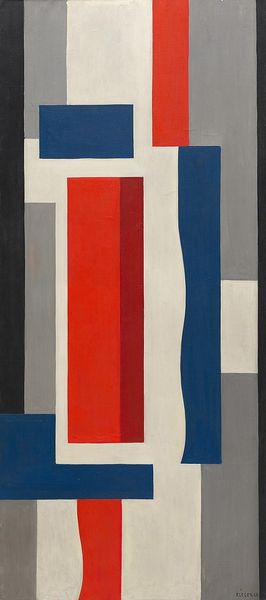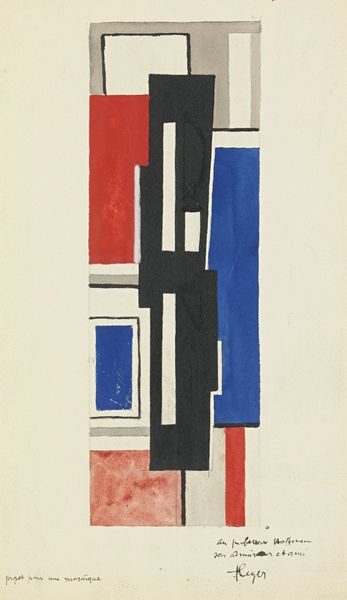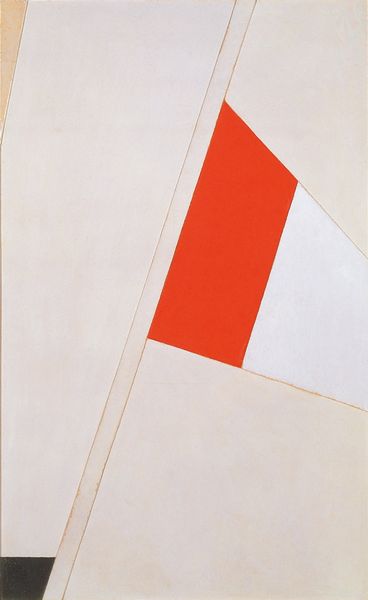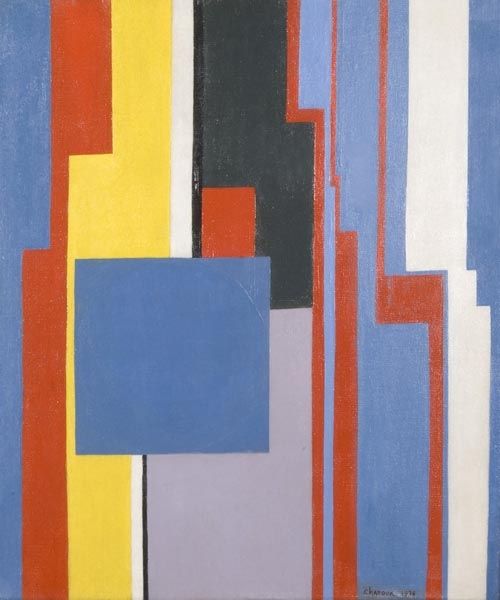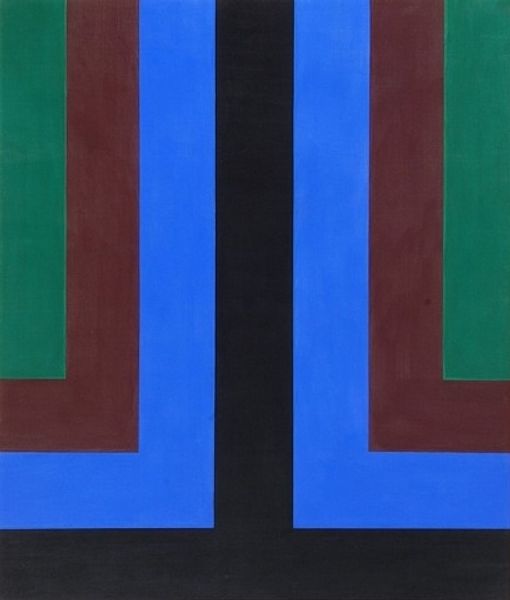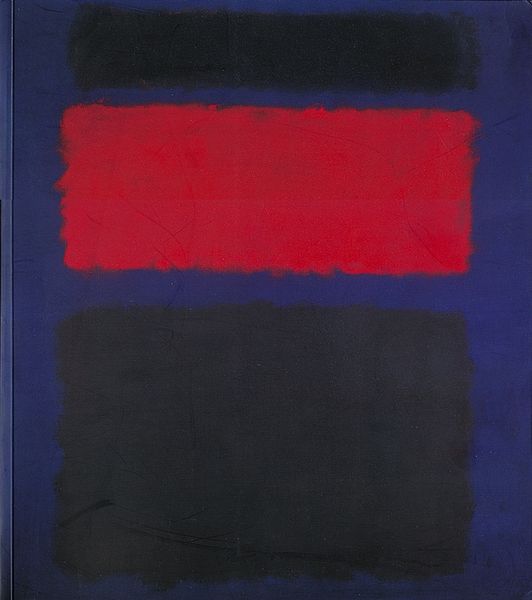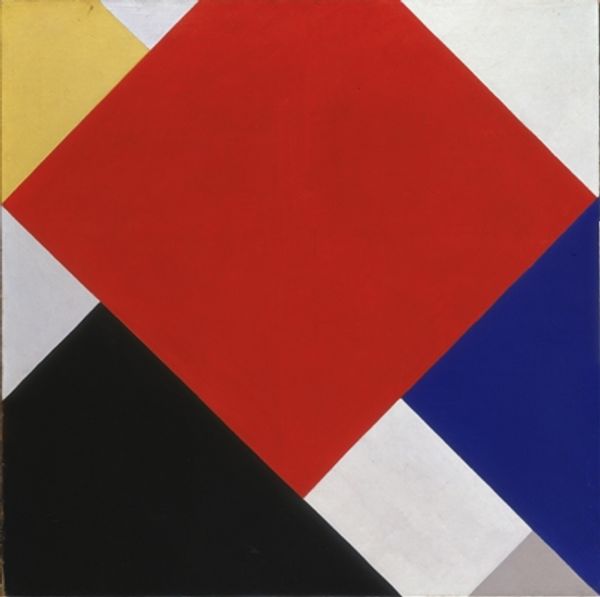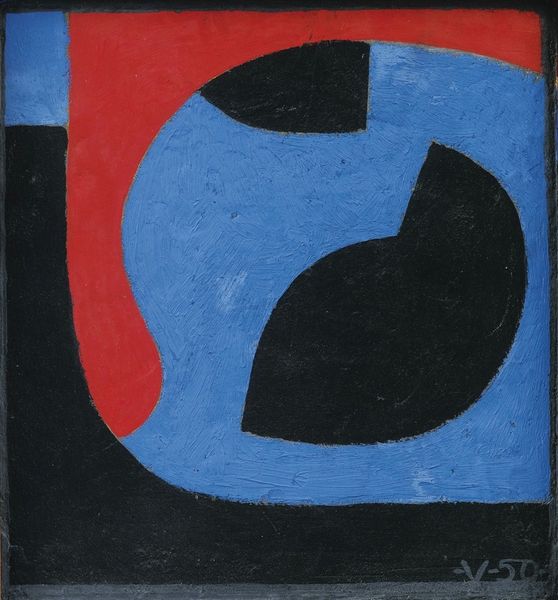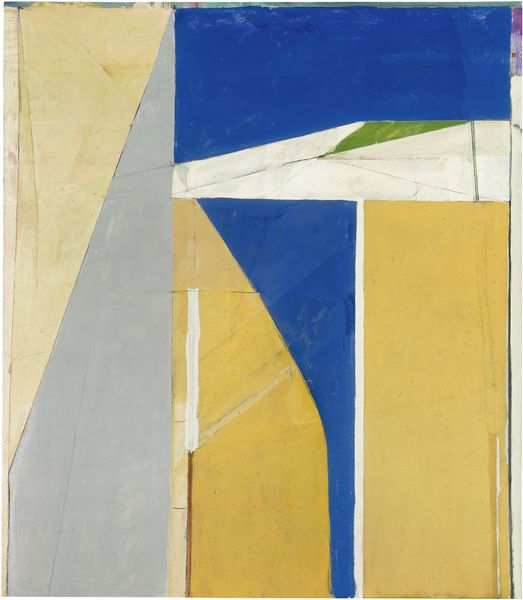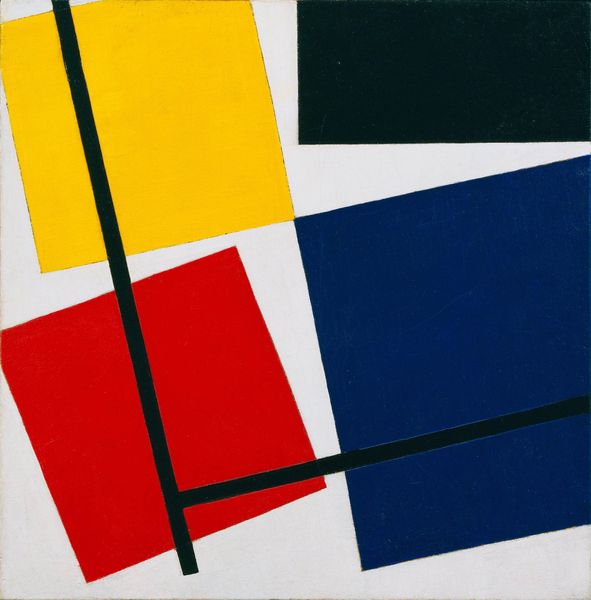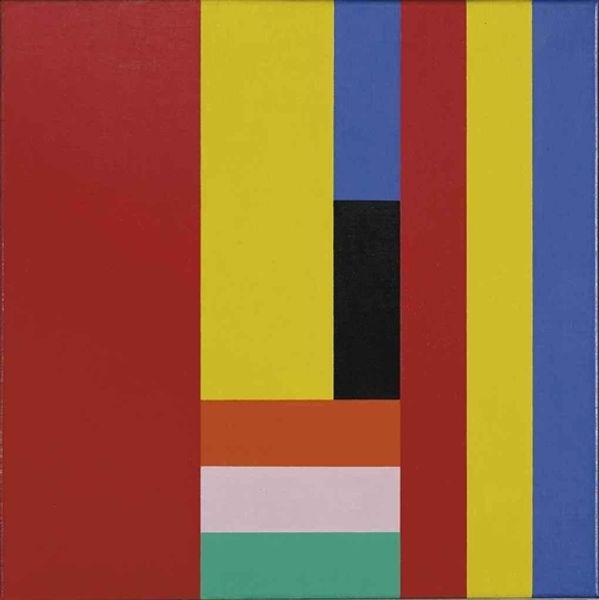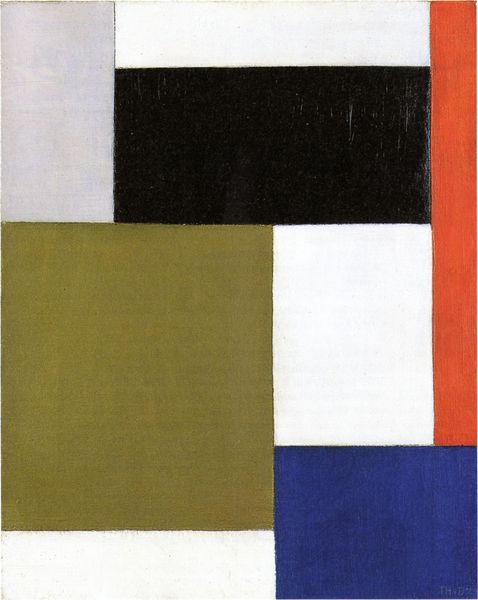
painting, acrylic-paint
#
cubism
#
acrylic
#
painting
#
acrylic-paint
#
painted
#
abstract
#
form
#
geometric
#
line
#
modernism
Copyright: Modern Artists: Artvee
Curator: Fernand Léger’s "Mural Painting," created in 1924, is a striking example of his unique approach to Cubism and abstraction, one deeply embedded in the social fabric of post-World War I Europe. Editor: My first impression is the visual tension achieved through stark, almost industrial color choices – blues, reds, whites and blacks arranged in severe geometric forms. It's austere and bold, simultaneously. Curator: Exactly. Léger was very interested in how modern industrial aesthetics reflected new forms of community after the war. This work presents abstract forms as analogous to the architecture and machinery that reshaped people’s lives and experiences of modernity. How do these formal relationships embody his politics? Editor: The careful placement of these shapes evokes the sense of order he often sought, and they create movement throughout the work that doesn't sit still. He creates a play of figure and ground that challenges traditional composition, encouraging new perceptions and modes of seeing. I'm seeing that also in his deliberate simplicity; the colors enhance the structural elements but do not seek to soften them. Curator: The emphasis on flat planes of color can also be read in relation to Léger’s interest in film and the mechanics of image reproduction and distribution. This piece really participates in an argument for making art for a modern mass audience. Consider the artist's wider engagement with left-wing political causes and worker’s rights, reflecting a vision for social and cultural equality in an increasingly industrialized and stratified society. It can feel like looking into blueprints for a future where labor, industry, and even leisure time were all reshaped in the mold of pure forms. Editor: That's a compelling reading. To come back to its structure, though, notice that even with these allusions to industry and a social cause, there’s a strong balance in its geometric shapes. It is, as you have highlighted, deeply reflective of Cubist ideologies – it's pushing the formal capacity of painting but maintains its compositional logic. Curator: In light of the era, this composition may seem like pure experimentation, but in essence, Léger offered new ways to imagine our place in the world and reflect the transformative energies reshaping it. Editor: Agreed, seeing its balanced forms with all its constraints, helps emphasize what is being suggested – not necessarily through its explicit representation but through form itself.
Comments
No comments
Be the first to comment and join the conversation on the ultimate creative platform.
